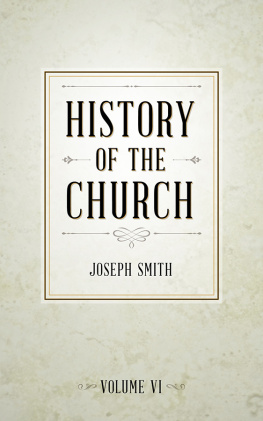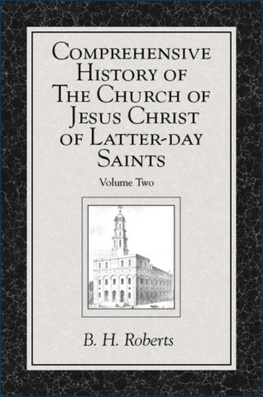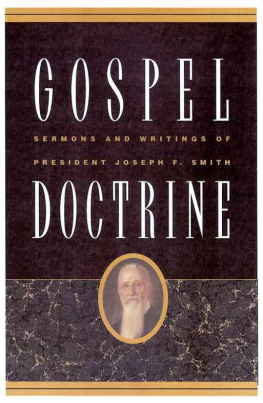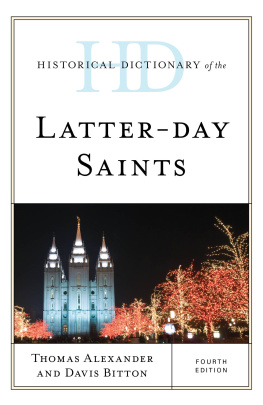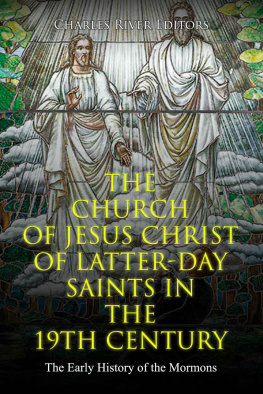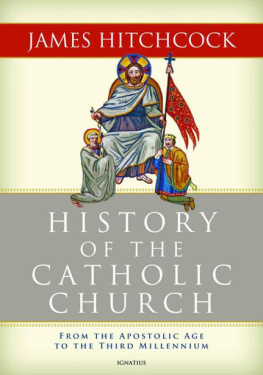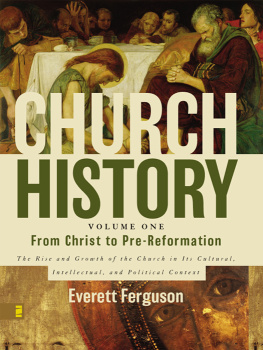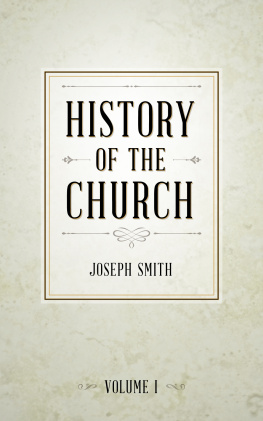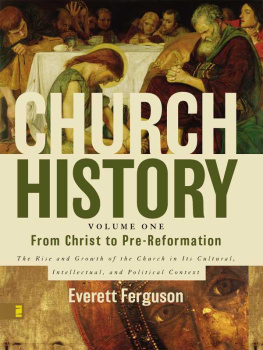History of the Church
History of the Church of Jesus Christ of Latter-day Saints, Volume 6
B.H. Roberts, Joseph Smith
1941 George Albert Smith.
All rights reserved. No part of this book may be reproduced in any form or by any means without permission in writing from the publisher, Deseret Book Company (permissions@deseretbook.com), P.O. Box 30178, Salt Lake City Utah 84130. This work is not an official publication of The Church of Jesus Christ of Latter-day Saints. The views expressed herein are the responsibility of the author and do not necessarily represent the position of the Church or of Deseret Book. Deseret Book is a registered trademark of Deseret Book Company.
C OPYRIGHT BY
GEORGE ALBERT SMITH
FOR
T HE C HURCH OF J ESUS C HRIST
OF
L ATTER-DAY S AINTS
1950
INTRODUCTION.
I. The Time Period.
The time-period covered in this sixth volume of the H ISTORY OF THE C HURCH is less than one year. Nine months and twenty-eight days, to be exact; or from the 1st of September, 1843, to the 29th of June, 1844. Events within this period are therefore given in elaborate detail. The general reader and the student of our history will find in this volume a larger collection of documents, official and otherwise, covering this period, than will be found elsewhere.
This volume also closes the first Period of our Church History, the period marked off by two events: (1) the birth of the Prophet Joseph Smith; and (2) his martyrdom and that of his brother Hyrum, at Carthage, Illinois.
The Journal History of the Prophet, that great source of historical knowledge concerning the development of the New Dispensation, closes with his entry of the 22nd of June, 1844. After that, for our knowledge of the remaining events of the Prophets life, we are dependent upon collections of data by the Church historians from public and private sources, of which collections there are two: the first extends from the 22nd of June to the 29th of that month, and forms the concluding chapters of this volume; the second begins also with the 22nd of June, and extends to the 8th of August, 1844; at which time the Twelve Apostles were sustained for the time being as the presiding council of the Church. This second collection of data by the Church historians will open Volume VII of this H ISTORY.
In the present volume we see the Prophets brave struggle against the overwhelming odds of his foesfoes within the Church, false brethren; and foes without the Churchthe combination of political and sectarian enemies fixed in their determination to kill him, destroy Nauvoo, and expel the Saints from Illinois: for all these things were included in the program of the anti-Mormons of Illinois, even before the death of the Prophet was encompassed. Three score and seven years now give perspective to the stirring events in which the really great drama was enacted; and from that vantage ground of perspective said events may be reviewed to the enlightenment of those who seek to know the truth, and the injustice of the things enacted in Illinois during the closing months of the Prophet Josephs earthly career.
II. Why the Latter-day Saints were Welcomed to Illinois.
On the one hand, in the above mentioned struggle, was a people who but a few years before had been welcomed into Illinois as exiles from a neighboring state, the victims of a cruel and ignorant intolerance. They were welcomed, in part, because of the injustice to which they had been subjected in a neighboring state, and because their physical sufferings, arising from want of shelter and food in an inclement season of the year to which they were exposed, was such as to move adamantine hearts to pity. Also they were welcomed because, as pointed out in the Introduction to Volume IV of this H ISTORY, the state of Illinois needed augmentation of her population by just such a people as the Latter-day Saints wereindustrious, frugal, skilled mechanics, successful farmers, experienced men of affairs, men capable of trade and commerce, enterprising and with a larger proportion of educated men and women among them than was to be found among the people of western Illinois in those days. I do not here employ the language of adulation on the one hand, nor seek to make invidious distinctions upon the other. Either would be vain, since the well-known and accepted facts of history would disprove the declarations made if not founded in truth. The fact is, however, that all that is claimed above for the Missouri exiled Latter-day Saints is true and well-attested by their achievements in settling Nauvoo, which in four years rose from a ware-house or two and a few half tumbledown shacks on the banks of the river, and called Commerce, to the dignity of being the first city in Illinois in population and commercial enterprise, and also gave promise of developing into a manufacturing center of great importance. This last item was evidenced in the fact that the founder of Nauvoo, President Joseph Smith, and the Nauvoo city council appreciated the possibilities in the water power of the Lower Des Moines Rapids in the Mississippi, at the head of which the city was located. Reference to his journal entry for the 23rd of September (this volume, p. 80) will witness that he suggested that a petition be sent to the national Congress for the construction of a canal around the rapids to overcome the obstruction for the free passage of river craft, which the rapids prevented during the low water period of each year, and thus enhance the value of the great stream to the inland commerce of the west. Reference again to President Smiths journal entry for the 8th of December, 1843 (this volume, p. 103) will disclose the fact that he gave instruction in the forenoon to his clerk to draw a plan for a dam in the Mississippi; and that in the afternoon of the same day the city council met and passed an ordinance authorizing Joseph Smith to erect a dam of suitable height to propel mills and machinery from any point within the limits of said city, and below the Nauvoo House; also in connection with this dam to construct a harbor or basin for steamboats and other craft; and to construct docks, wharfs and landings, the wharfage fees to be regulated by ordinance of said city (this volume p. 106).
III. Nauvoo as a Possible Manufacturing Center.
What further contributed to the promise that Nauvoo would be a great manufacturing center as well as the center of an immense agricultural region with a splendid commercial outlet, was the fact that artisans and tradesmen of the very first order in skill, were rapidly gathering into the city, not only from the New England and other Eastern states of our own country, but also from the British Isles. It was inevitable if let alone that Nauvoo would become the greatest manufacturing center of Illinois, and among the first of such cities in the United States. The Prophet did not live to see even a commencement made upon these large enterprises he had conceived, but subsequently his zealous followers organized a company to carry them to a successful conclusion under the title of The Nauvoo Water Power Company,
In addition to these measures, manufacturing and agricultural associations were incorporated; also the Nauvoo House Associations for the erection of a hotel, ambitious to be known as the finest hostelry in the Upper Mississippi country. One of the agricultural associations, known as the Big Field Corporation, held six sections, or three thousand eight hundred and forty acres of land east of Nauvoo; and the year following the Prophets death the company harvested about thirty thousand bushels of corn, nearly the same amount of wheat, besides an abundance of oats, barley, buckwheat, potatoes and other vegetables.

